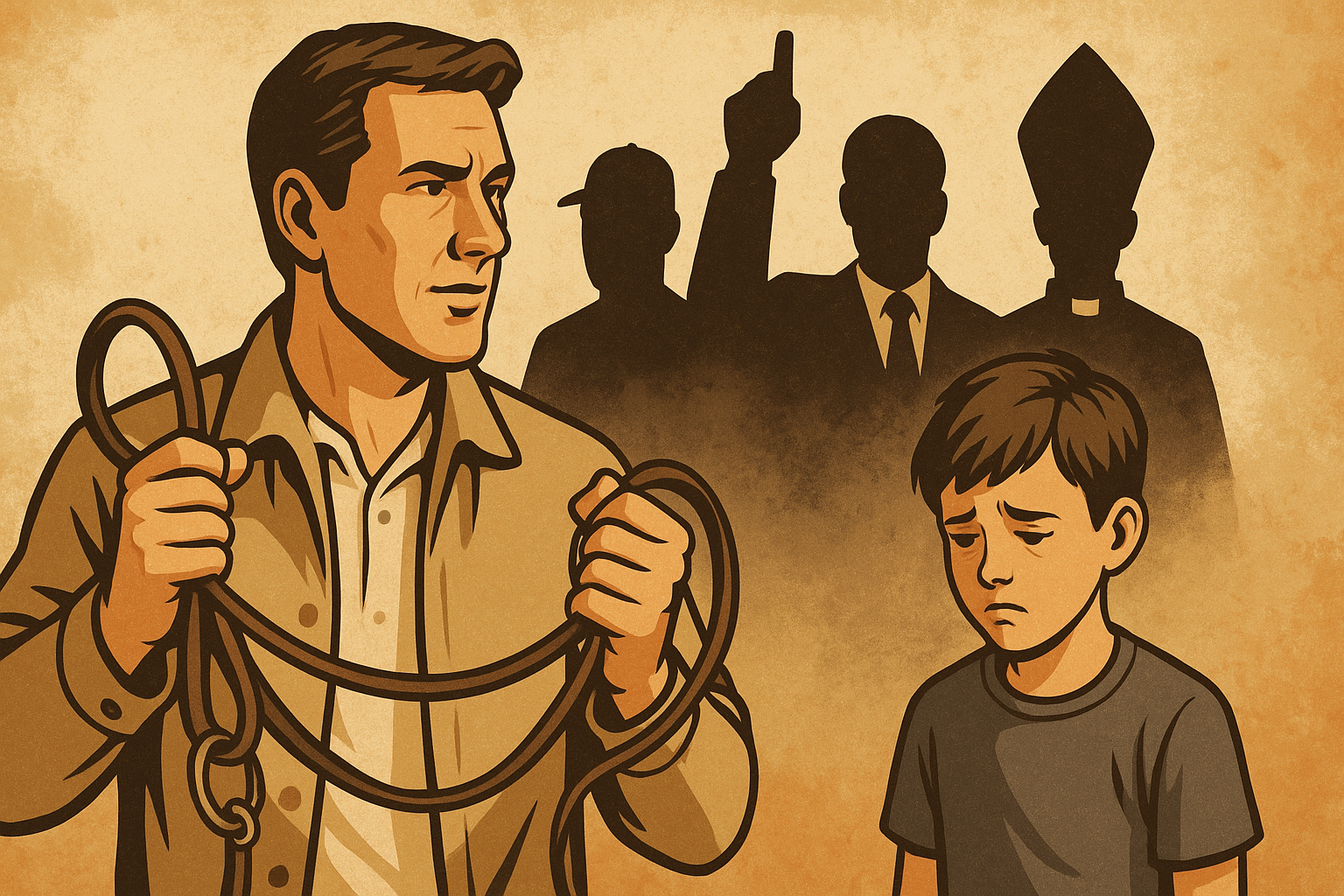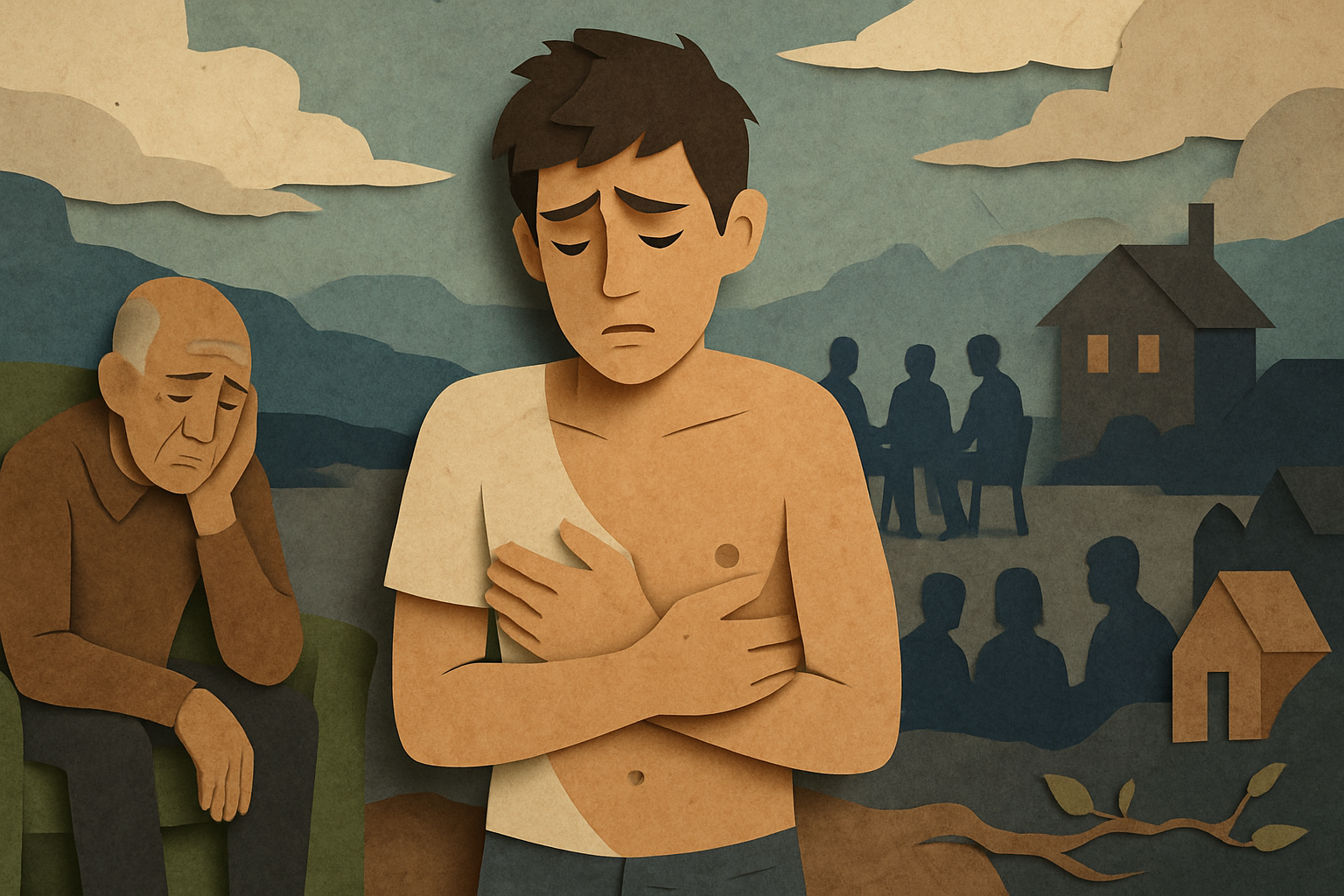“It’s hairy down here.” That was my boyfriend’s four-year-old son alerting us to the amount of hair that was on the carpet where he was sitting. I had developed a habit of running my fingers through the back of my hair while watching TV and depositing the strands onto the floor next to the couch. Once or twice a week, I would drag my hands across that patch of carpet, gathering up the hair that had accumulated. Clearly, I was behind on my clean-up duty that day, and I was humiliated in front of a small child.
My boyfriend had already observed this practice and expressed concern that I was pulling out my hair. I argued that I wasn’t really yanking it out of my scalp—I was just helping remove the strands that were already loose but hadn’t yet fallen out due to my tangle of curls. I even demonstrated for him, pulling softly on his hair. See! I don’t really have a problem!
This hair-tugging habit went on for years, coming to an end (for the most part) a couple of years ago. My once-thick hair had been thinning on its own since my mid-20s, and I could no longer tolerate the possibility that I was helping it along. Even as I struggled to stop, I saw it as just a quirk. I never thought it actually had a name.
Recently, thanks to an online conversation amongst writers, I discovered that I have several Body-Focused Repetitive Behaviors (BFRBs), and that people I know and admire also suffer from them.
According to the TLC Foundation for Body-Focused Repetitive Behaviors, the term BFRB covers a group of related disorders, including hair pulling, nail biting, skin picking, tongue chewing, and lip or cheek biting. TLC explains: “These behaviors are not habits or tics; rather, they are complex disorders that cause people to repeatedly touch their hair and body in ways that result in physical damage.”
Body-Focused Repetitive Disorders are now categorized under Obsessive-Compulsive and Related Disorders in the American Psychiatric Association’s updated manual, known as the DSM-5. In addition to experiencing harmful effects, one of the common threads running through these disorders is repeated attempts to stop, with the behavior going in and out of remission over time.
While I don’t believe that my BFRBs rise to the level of serious disorders, I have endured varying levels of discomfort and even injury from them. Learning more about what is sometimes referred to as “pathological grooming” has been eye-opening. Much like substance abuse, I believe that we can help lessen the shame and promote treatment by talking more about these behaviors. So, let’s take a look at three of the more common BFRBs.
Trichotillomania: Hair-Pulling Disorder
As I was researching this piece, I kept running across details that made me feel like I had been spied on throughout my life. The Mayo Clinic lists a number of hair-pulling symptoms on its website, with one describing the act of “[p]laying with pulled-out hair or rubbing it across your lips or face.”
Since early childhood, I used to “twirl” my curly hair. Once I succeeded in rolling the hair into a smooth lock, I would run it across my lips. I did this for decades. When my hair became too thin to grow long, I was effectively forced to give up this practice. That’s when I moved on to the soft pulling that may or may not actually remove hair from my scalp.
Writer Jessica Yarbrough recently wrote for SELF about her struggle with trichotillomania. For 15 years she has pulled out the hair in her eyebrows. Yarbrough says, “I posted this on my Instagram and had over 10 friends/acquaintances reach out to say they had a similar struggle. I think these ‘disorders’ are way more common than is currently thought.”
The Mayo Clinic explains that hair pulling is often associated with stress and anxiety, and the act can provide temporary relief from negative emotions. Some people pull out their hair intentionally and even develop rituals associated with the behavior. Hair pulling can also be automatic and take place when the person is bored, lonely, or tired.
The disorder can leave bald spots, ultimately affecting the sufferer’s confidence and comfort in public and social situations. Yarbrough describes how “the feeling of shame and ugliness that stemmed from having my disorder emblazoned on my forehead . . . was stressful enough to trigger a fresh episode.”
The good news is that the TLC Foundation is conducting research to advance knowledge on trichotillomania and other BFRBs.
Onychophagia: Nail-Biting Disorder
Who doesn’t know someone who bites their fingernails? An estimated 20 to 30 percent of the general population suffers from a chronic form of this behavior, and the number may be even higher. The same boyfriend (and now husband) who gave me a hard time about my hair pulling frequently gnaws his nails down to jagged nubs.
I started biting my nails as a young child, and it has stuck with me for decades. I’ve been able to quit for short times, but I always come back to it. I’ve been taking Biotin and eating healthier for the past few years, which has made my nails stronger and harder to bite. Sometimes, I end up with a little bit of white on every nail at once—a major accomplishment!
When busy or stressed, however, I might compulsively chew all of them off in one brief period. Often I’m not aware I’m doing it until I’ve gone through almost every finger.
Psychology Today reports: “In addition to tissue damage to fingers, nails and cuticles, nail biting can cause mouth injuries, dental problems, abscesses, and infections.”
Given how long I’ve been doing this, it’s a surprise that my first infection requiring medical attention came only last year.
It’s unlikely that my husband or I will ever completely give up nail biting. An article for NPR suggests coming to terms with the behavior and even reframing it as a choice.
Dermatillomania: Skin-Picking (Excoriation) Disorder
About eight years ago I was at the podiatrist having an ingrown toenail examined. The doctor inquired about the collection of bandages on my heels. I confessed that I often picked at the thick skin on my feet, ripping off large pieces.
The doctor prescribed a special lotion that didn’t work despite dutiful applications. In fact, nothing seems to work to prevent the build-up of hard skin on my feet, and once it’s thick enough I can’t seem to resist tearing at it. I do the same thing with the calluses that form on some of my fingertips.
The action itself doesn’t hurt when I’m doing it, but hours later I realize that I’ve picked myself raw. I keep all sizes of Band-Aids in my medicine cabinet and go through them like crazy. Some days it hurts to put all my weight on whichever foot I was focused on the night before while watching TV or working on the computer.
Learning that this compulsion has a name and that people I respect also experience the same frustration and embarrassment has been a huge relief. Mental Health America reports that Excoriation Disorder occurs in about 1.4 percent of the adult population in the U.S. and is more common in women. People suffering from the disorder often suffer from obsessive-compulsive disorder, major depressive disorder, and hair pulling and nail biting as well. So it is not unusual that I have been surreptitiously picking up hair, skin, and fingernails inside my home and car for years.
Treatments recommended include medication, including selective serotonin reuptake inhibitors (SSRIs)—antidepressants that can help reduce obsessive thoughts and compulsive behaviors. Cognitive-behavioral therapy (CBT) has also shown success. NPR reveals that “there’s increasing interest in an amino acid called N-acetylcysteine. One study showed that NAC helped lessen urges for more than half of participants.”
I’ve been on an SSRI before, and I’m not eager to go back on one. But I will probably give CBT or other therapies a try. If I can quit smoking and drinking, I should be able to quit anything, right?!
Mostly, I hope to bring these disorders into the light and tackle the stigma around BFRBs. If you struggle with these kinds of behaviors, know that you are not alone.



